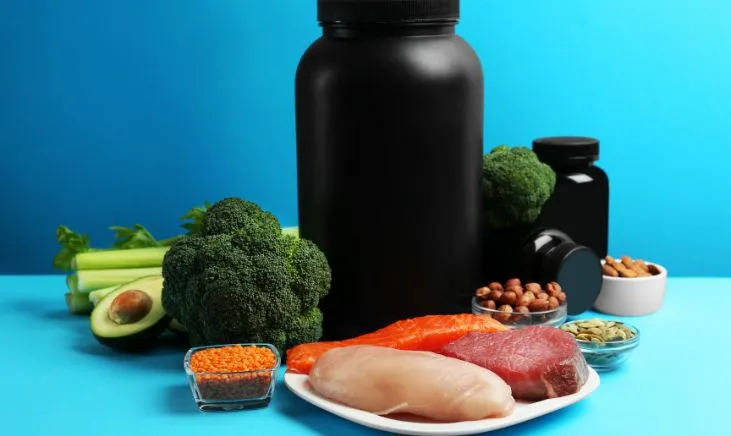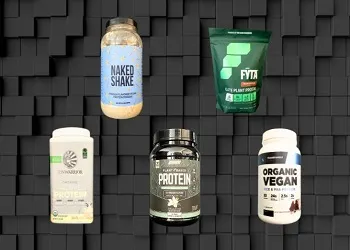It’s time to upgrade your health with the best sources of amino acids—food!
Now, all foods have varying levels of amino acids. Some contain all nine essential amino acids (EAAs) the body cannot produce and need to support vital organ functions. Knowing which foods have all nine EAAs is important to incorporate them into your diet more frequently. Different supplements, such as essential amino acid supplements, BCAA supplements, or vegan amino acid supplements can benefit certain individuals, such as those who struggle to consume the recommended amount of amino acids.
This list of foods with amino acids is the ultimate guide to incorporating nutrient-rich foods into your diet to enhance your quality of life by boosting your health. Keep reading to get started upgrading your lifestyle today!
Table of Contents
The Best Sources of Amino Acids
A balanced diet of foods containing amino acids—whether animal proteins, plant proteins, or both—is crucial to avoiding amino acid deficiency, as it can be detrimental to one’s health. Incorporating these foods into your diet can boost and strengthen overall health to prevent the potential risk of amino acid deficiency.
Continue reading to find out which foods have all nine essential amino acids and are the best sources to enrich your diet!
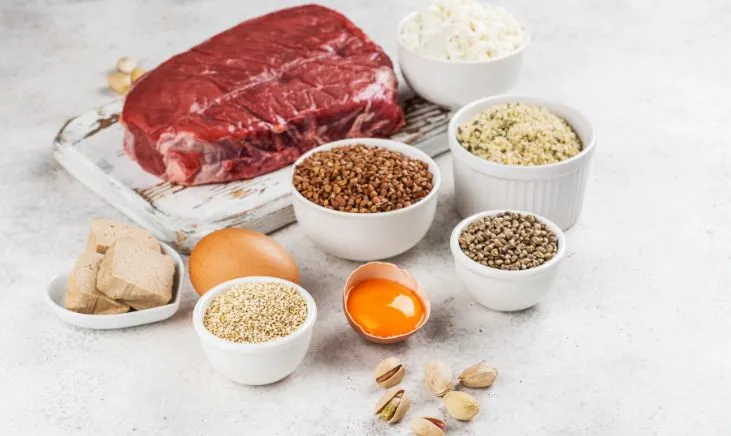
Quinoa
Containing all nine EAAs, quinoa is one of the top plant foods that can be incorporated into a range of diets. It is a plant-based option with amino acids that boost fiber to maintain gut health.
Compared to other food sources that contain amino acids, like wheat or rice, quinoa has higher contents of lysine, which plays a vital role in maintaining cholesterol levels and promoting wound healing.
Eggs
Another food that contains all nine EAAs, eggs are an excellent nutritional option for breakfast, lunch, or dinner. One study highlighted the benefits of the digestibility of egg protein, a great source of EAAs.
Fish
Most fish contain EAAs, though some are better sources than others. Salmon is one such example. It is a quality source of EAAs, branched-chain amino acids (BCAAs), and omega-3s.
The nutrients in salmon have been linked to reducing the risk of coronary heart disease while supporting immune function and overall health. One study dedicatedly detailed the amino acid composition of 27 different fish from the Indian subcontinent to study and discuss the differences in amino acid profiles in fish species.
Mushrooms

Boasting 17 amino acids, including the nine EAAs and BCAAs, mushrooms are a quality source of these important nutrients. All the amino acids found in mushrooms are in high concentration except phenylalanine and methionine.
The importance of a quality breakfast is continuously stressed in today’s society due to the lack of nutrients that come with most highly processed cereals that contain high amounts of added sugars. It was revealed that adding mushrooms to a cereal diet could easily overcome lysine deficiency in a person’s diet.
Nuts
Nuts are another great example of a natural food with a high amino acid profile, full of other powerful nutrients that benefit one’s health. The content of amino acids in each type of nut differs significantly due to location and overall variety. Still, research reveals that the benefits of consuming nuts can be strengthened by combining different protein sources with good levels of EAAs.
Tofu
Tofu is an excellent plant-based alternative for individuals on a vegetarian or vegan diet, containing all nine EAAs. It is rich in vitamins and minerals that help support overall health.
The wastewater, or soy whey, that results from tofu products is also considered a potential source of amino acids, which one study researched and found a surprisingly high amount of amino acids.
Meat
Poultry and beef are some of the best sources of amino acids. Turkey, for example, contains significant amounts of tryptophan. This amino acid is responsible for helping the body make niacin, which is linked to mood, relaxation, and happiness and is productive in reducing symptoms of depression.
Research has shown that meat contains high concentrations of amino acids, which increase the health benefits of consuming these foods.
Fruits

Each type of fruit has a unique amino acid profile, most containing a high amount of leucine. Berries, apples, and bananas are all high in amino acids, with apples containing around 16 amino acids. Unfortunately, fruits do not include all nine EAAs, though they have some, if not most, plus other nonessential amino acids that benefit one’s health.
Legumes & Beans
An amazing source of plant-based protein, legumes and beans are high in amino acids. However, they are not complete proteins because they do not contain all nine EAAs. Legumes and beans have an excellent amino acid profile and are rich in nutrients that can do wonders in boosting a healthier lifestyle.
Seeds
With seeds, it varies on which type contains all nine EAAs. Pumpkin, chia, and flax seeds are all complete proteins, boasting nine EAAs to be classified as such.
Sunflower seeds are an example of a seed that does not contain all nine EAAs. These seeds have eight of the nine EAAs, with abundant amounts still providing significant nutritional value.
Dairy
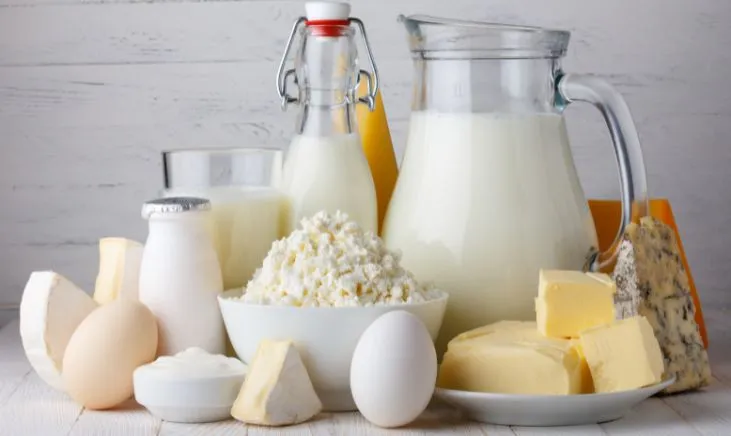
Dairy products such as yogurt, cottage cheese, and low-fat cheese are all complete proteins. Boasting calcium for strong bones and a sturdy amino acid profile, dairy products are another excellent source of amino acids. These provide nutritional value that coincides with health benefits to keep the body strong.
Amino Acids Categories
Finding foods that contain amino acids is important, but knowing the differences between the types of amino acids is also crucial to maintaining one’s health. Understanding the differences between EAAs and nonessential amino acids and how they can be beneficial to your health is important.
Essential Amino Acids
In total, there are nine EAAs and they include:
- Histidine
- Isoleucine
- Leucine
- Lysine
- Methionine
- Phenylalanine
- Threonine
- Tryptophan
- Valine
These nine amino acids are essential to maintain the body’s health. They are not produced by the body, meaning they must be ingested through dietary means for the body to reap the benefits of these indispensable nutrients.
Any food containing all nine EAAs is called a complete protein, though some foods can contain most or some essential amino acids without having all of them.
Not getting enough EAAs can harm a person’s health, as the nutrients are responsible for tissue repair, nutrient absorption, and protein synthesis. Eating complete proteins and a well-balanced diet of foods that contain a different range of amino acids is important for maintaining and improving health.
Specific amino acids provide different benefits. For example, leucine is an essential amino acid that will help to:
- Regulate blood sugar levels
- Support immune function
- Repair muscle tissue
- Heal wounds
Branched Chain Amino Acids
BCAAs are three EAAs that stimulate muscle protein synthesis and prevent muscle breakdown.
The BCAAs include:
- Valine
- Isoleucine
- Leucine
As they are also EAAs, BCAAs must be consumed through foods for the body to benefit from these proteins. With the hype of taking BCAA supplements to promote muscle growth and reduce muscle breakdown growing to multi-million dollar proportions, one study dissolved these claims, finding that the opposite was true. The study discovered that BCAA supplementation after training resulted in a decrease in muscle protein turnover.
Eating foods with BCAAs is still very much necessary for muscle protein synthesis. Still, the unwarranted need to supplement with them after workouts to improve muscle building and prevent muscle breakdown is unnecessary and unhelpful.
Nonessential Amino Acids
The nonessential amino acids refer to amino acids that are naturally produced by the body and are not required to be consumed to supplement.
Nonessential amino acids include:
- Alanine
- Arginine
- Asparagine
- Aspartic acid
- Cysteine
- Glutamic acid
- Glutamine
- Glycine
- Proline
- Serine
- Tyrosine
These amino acids are responsible for energy production and immune function. Nonessential amino acids can be converted into glucose to be used by the body for energy.
Conditionally Essential Amino Acids
Conditionally essential amino acids are as its name suggests. They are amino acids that are not typically essential but become crucial for the body during certain conditions, such as stress, pregnancy, infancy, or illness.
Conditionally essential amino acids include:
- Arginine
- Cysteine
- Glutamine
- Tyrosine
- Glycine
- Proline
- Serine
An example of such is the amino acid arginine. The body does not make enough arginine to heal from serious injuries or fight diseases such as cancer. Arginine increases blood flow to wounds to increase collagen formation and reduce inflammation for healing.
The Benefits of Amino Acids
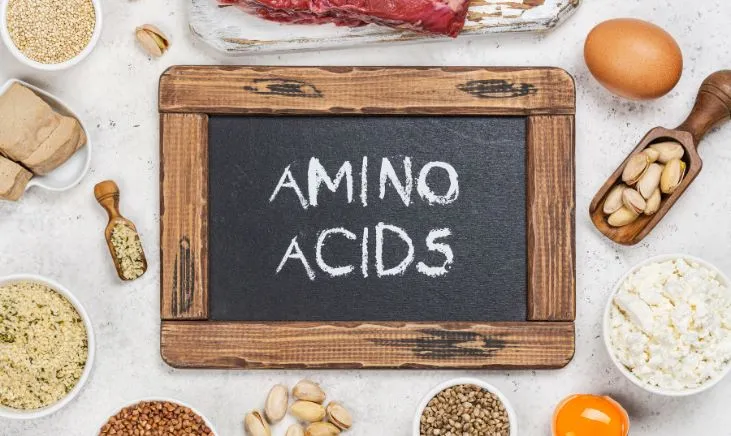
So, what are the benefits of amino acids? We’ve briefly discussed some amino acids and their benefits, but overall, here is a list of the benefits of amino acids and how they help support health.
Amino acids and their benefits:
- May improve exercise performance and recovery
- Promotes brain function
- Prevents muscle wastage and promotes muscle growth
- May support weight loss
- Helps lower blood sugar levels
- Helps boost memory
- Strengthens immune function
- Stimulates wound healing
Risks of Taking Amino Acid Supplements

Dietary supplements are a popular method of achieving nutrients that a person may otherwise not get in their everyday diet. Amino acid supplementation is one such example, with EAA supplements sold at gyms, fitness spaces, and by fitness-centered brands to cater to individuals looking to boost muscle protein synthesis and speed up recovery from workouts.
Unfortunately, there are risks involved with taking amino acid supplements. Some examples of this include:
- Diarrhea
- Bloating
- Abdominal pain
- Unsteady blood pressure
- Increased risk of gout
- Headaches
- Nausea
- Lowered blood sugar levels
The intensity of these risks varies and can be either minimal or severe, depending on any pre-existing medical concerns. We recommend consulting your doctor before beginning to take amino acid supplements.
Signs of Amino Acid Deficiency
Amino acids are frequently found in high-protein foods as they are the building blocks of proteins. Insufficient protein intake or an unbalanced diet can result in amino acid deficiency, which is detrimental to health as amino acids support immune function, promote healthy skin, and regulate blood sugar levels.
Signs of amino acid deficiency:
- Weakened immune system
- Muscle weakness
- Pressure sores
- Diarrhea
- Weight loss
- Hair and skin depigmentation
- Fertility issues
- General weakness
- Memory loss
- Cravings for unhealthy foods
In most cases, simply supplementing foods with amino acids and complete proteins can help negate these concerns. But if these issues become severe, please consult a medical professional to seek aid.
Frequently Asked Questions
Which Vegetable Has All Nine EAAs?
Numerous vegetables are complete proteins that contain all nine EAAS. Some examples include taro, potatoes, spirulina, tempeh, and amaranth. We recommend adding many other vegetables to your meals for a balanced diet of amino acids and nutrient-rich foods.
Should I Take Amino Acid Supplements?
If you are eating a balanced diet, then amino acid supplementation is unnecessary. Typically, amino acid supplementation is recommended only if an individual is under excessive stress or undergoing treatment for cancer.
How Many Amino Acids Do I Need?
The body needs all twenty amino acids to function properly and support the vital organs. Each amino acid has a different role that is significant in promoting health. If one amino acid is deficient, it can result from a lack of a balanced diet or an issue in the body’s production of said amino acid.
